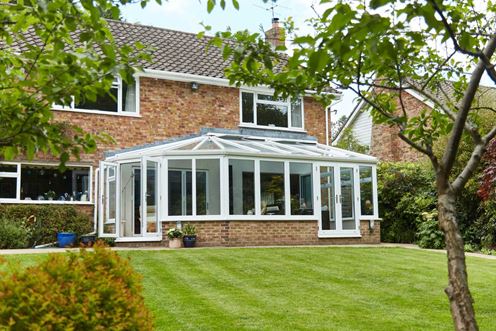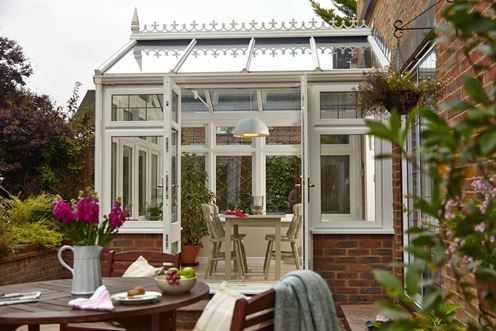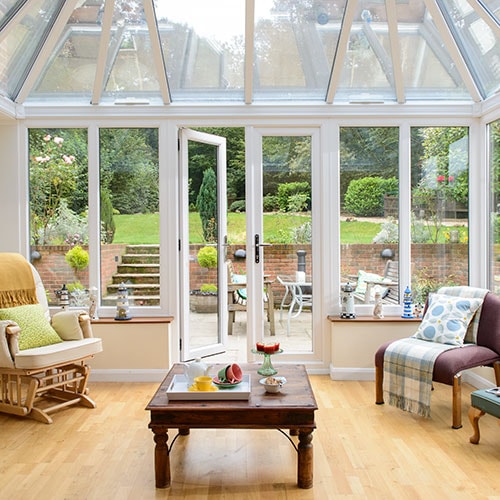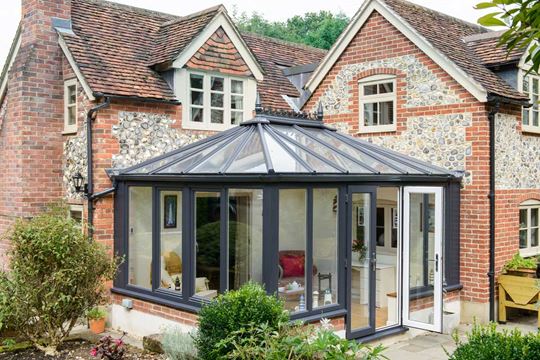Choosing the right materials matter when it comes to your conservatory. Wood and uPVC are hard wearing, weather resistant and strong, so deciding between them often comes down to your personal taste and budget. This guide helps you decide which material might be right for you.

uPVC is a very versatile material, which is what makes it so popular for conservatories. Hardwearing, it won’t bend or warp over time and it takes very little maintenance to keep it looking good. uPVC is available in a large range of colours like anthracite grey and finishes like natural woodgrain.
One great advantage of uPVC is its affordability, in both initial and ongoing costs. uPVC colours and finishes don’t fade and don't need to be repainted or refinished them over time. Modern uPVC has thermal breaks and multichambered construction help keep the warm air from escaping and the cold air from getting in. This means they cost very little to maintain over time and they can help save you money on energy bills too.
Because it is so versatile and affordable, we use uPVC in all our conservatories. We have a wide range of styles and configurations to choose from. Add tilt and turn windows to give you different ventilation options and a great way to enjoy your garden.

Many people still prefer the timeless, classic appearance of natural timber. Wood is resilient, a natural insulator and, with a little bit of care, it could last for decades. Wood is also very solid, so it can withstand almost anything the elements can throw at it.
A common misconception about wood is that it rots quickly and can warp easily. Modern timber is pressure treated to make it resistant to rot and decay, extreme temperatures and extreme weather. That said, wood will need regular maintenance to keep its finish in good condition.
That brings us to the other point about timber conservatories - affordability. Wood is more expensive than uPVC due to its production costs. After that, it costs more to maintain wood, and over the years those costs mount up, making wood less affordable than uPVC in the long run.
At Anglian, we have more than 50 years of experience in the home improvement sector. We make all our products here in Britain and offer guarantees on the work we do for our customers. We’d love to help you create your dream conservatory, so if you’re thinking of making home improvements, give us a call to talk through your ideas.
 Styling your conservatory
Styling your conservatory
Adding finishing touches to your conservatory is the best part! Here, we give you tips on the best flooring, lights and even plants to add to your new living space.
 How to Choose Conservatory Flooring
How to Choose Conservatory Flooring
Your new conservatory brings a world of possibilities, but how do you decide which flooring to choose? Our handy guide takes you through popular options and which environment they’re best for.
 Choosing your conservatory shape
Choosing your conservatory shape
Getting the right shape to your conservatory so that it matches your home is more important than you think - it'll make it more usable and can help add value to your home.


